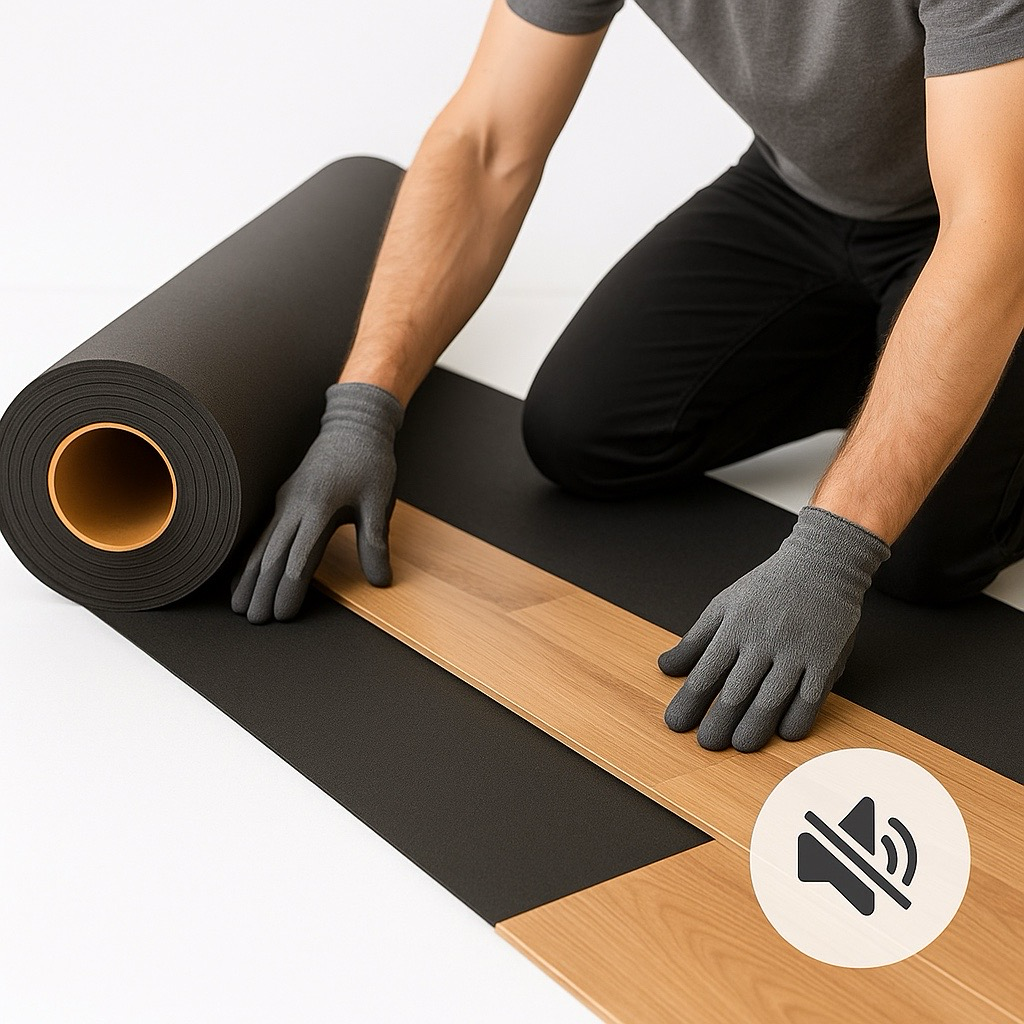Floor Soundproofing Guide: 3 mm Acoustic Rubber Underlayment
Many homes and commercial buildings struggle with impact and airborne noise travelling through floors. Using an acoustic underlay beneath your flooring can significantly reduce footfall noise and improve comfort. In this guide, we explain how a 3 mm recycled rubber underlayment helps control noise and protect your floor, using SilentCloud’s 3 mm acoustic rubber underlay as an example.
What Is a Rubber Acoustic Underlayment?
This acoustic underlay is made from high-density recycled rubber (approximately 950 kg per cubic meter) and has a slim 3 mm profile. It delivers impact sound insulation of up to 54 dB and airborne sound insulation up to 50–54 dB. Despite its low profile, it weighs around 2.9 kg per square meter, providing more mass—and therefore better noise reduction—than conventional thin mats.
Key Benefits
• Effective sound reduction: Up to 54 dB impact sound reduction, plus airborne sound insulation up to 50–54 dB.
• High density and mass: Formulated at about 950 kg per cubic meter with a weight of about 2.9 kg per square meter, giving superior acoustic control compared with lighter mats.
• Low profile & flexible: Only 3 mm thick, ideal for projects where floor height is limited.
• Durable & moisture-resistant: Made from 94% recycled rubber; resistant to moisture, mould and bacteria.
• Environmentally friendly: Contributes to LEED credits and is CE-marked; compliant with UK Building Regulations Part E.
• Versatile applications: Suitable beneath ceramic tile, porcelain, stone, vinyl planks/tiles, LVT and wood flooring. It’s also used in residential and commercial buildings, home gyms and studios where space is limited but acoustic control is required.
Installation Tips
• Choose the roll length you need (from 1 m to 10 m) and order a continuous roll to minimise seams.
• Prepare the subfloor, ensuring it is clean and level.
• Unroll the underlayment across the floor with the rubber surface facing down; butt joints together without overlapping.
• Tape or glue joints to maintain continuity.
• Install your chosen flooring (wood, laminate, tile or vinyl) on top according to the manufacturer’s instructions.
FAQs
How much noise does this underlay reduce? It provides impact sound insulation of up to 54 dB and airborne sound insulation up to 50–54 dB.
What flooring can it be used under? It’s suitable under ceramic, porcelain, stone, vinyl planks/tiles, LVT and wood.
Is it eco-friendly? Yes. It’s made from 94% recycled rubber and is moisture-, mould- and bacteria-resistant.
Does it meet building regulations? It is CE-marked and compliant with UK Building Regulations Part E.
By using the right underlayment beneath your flooring, you can dramatically reduce noise transmission and create a quieter, more comfortable space. For more information or help choosing the right product, feel free to contact our team or explore our other soundproofing guides.



